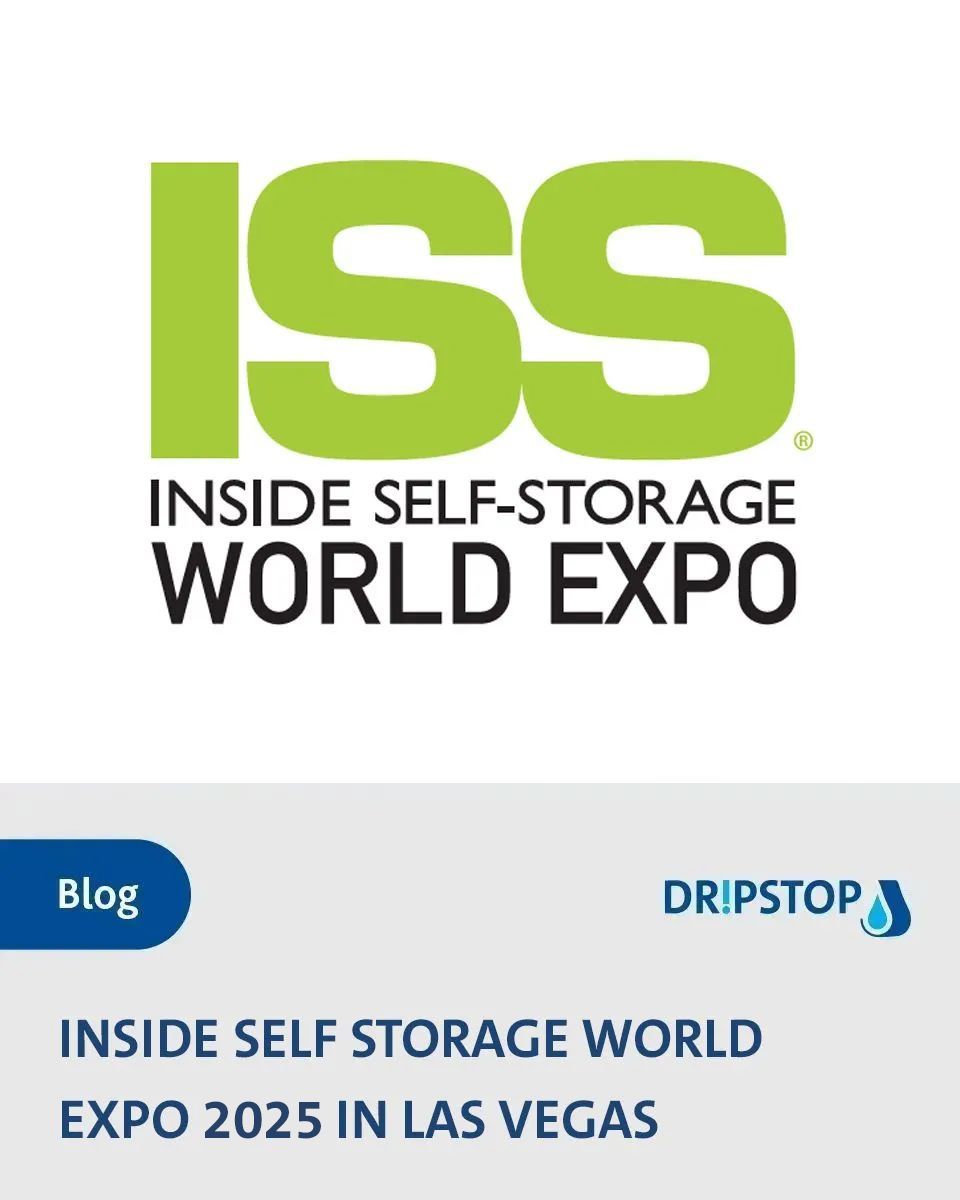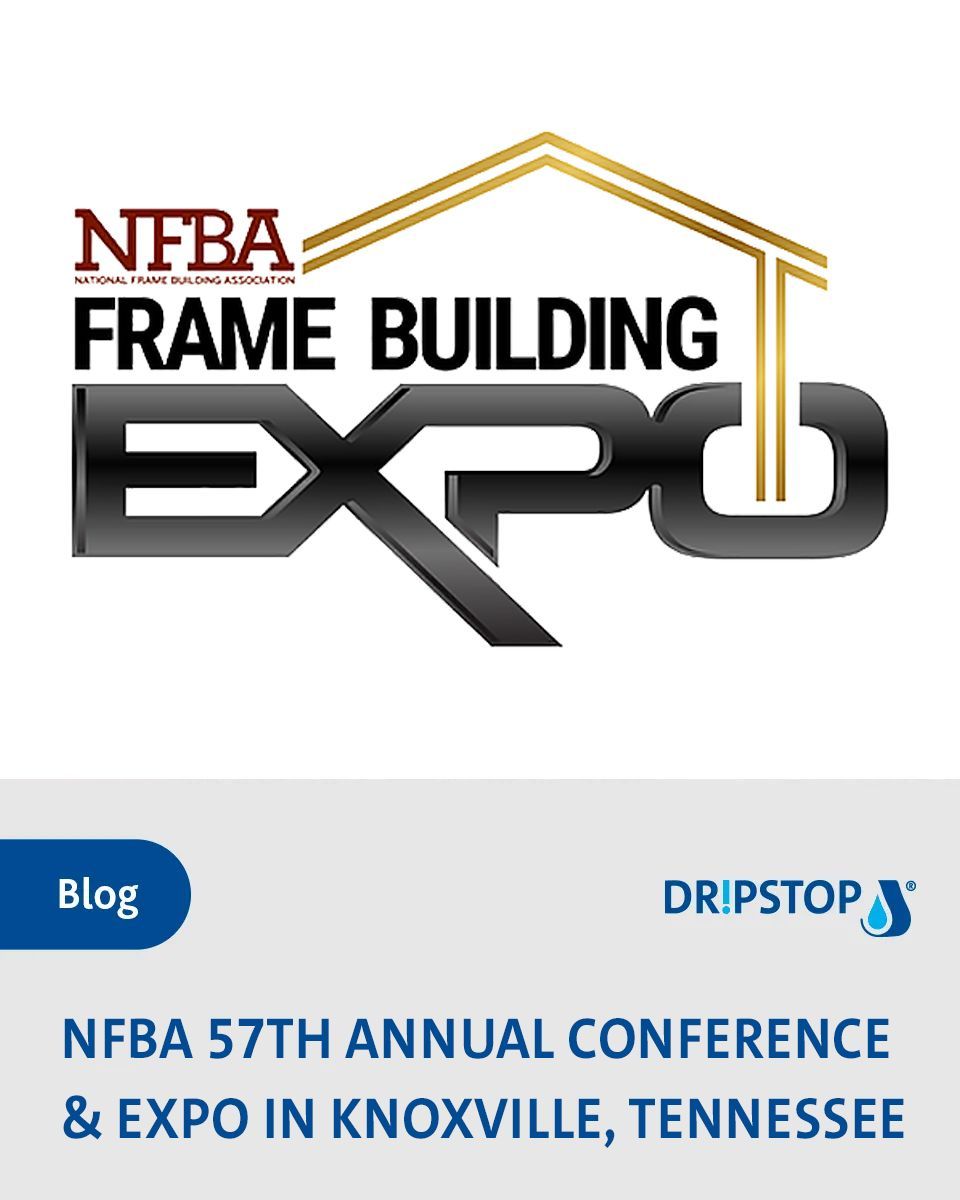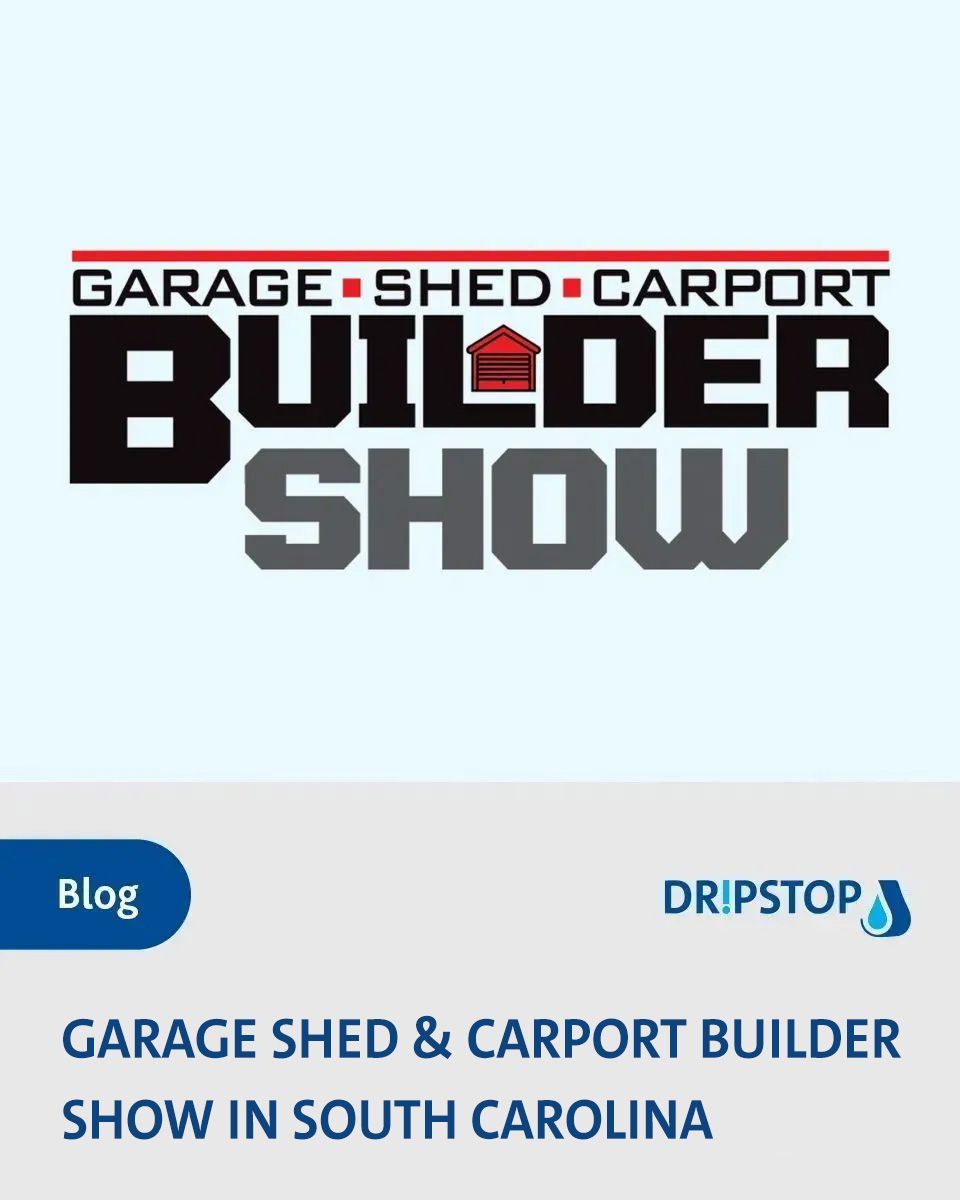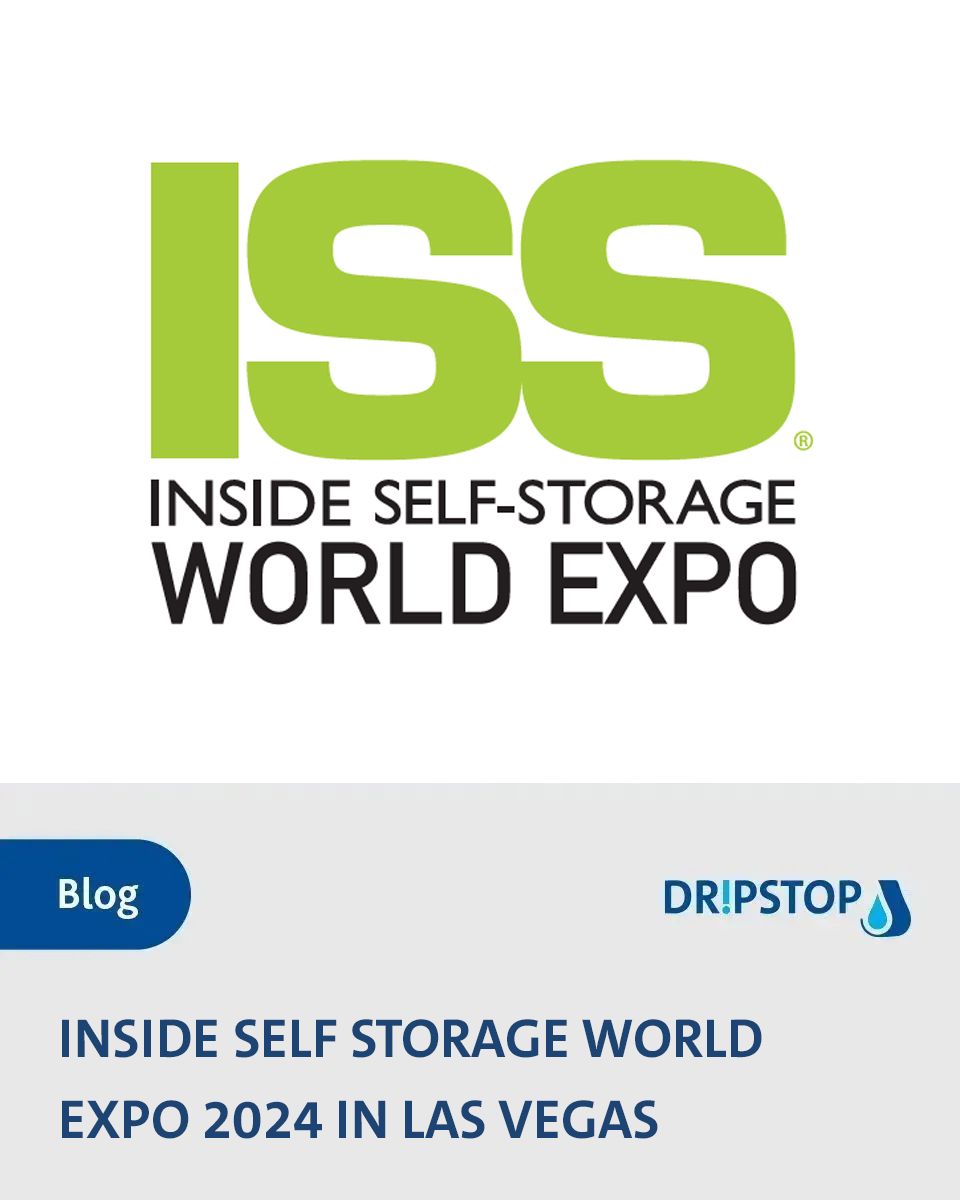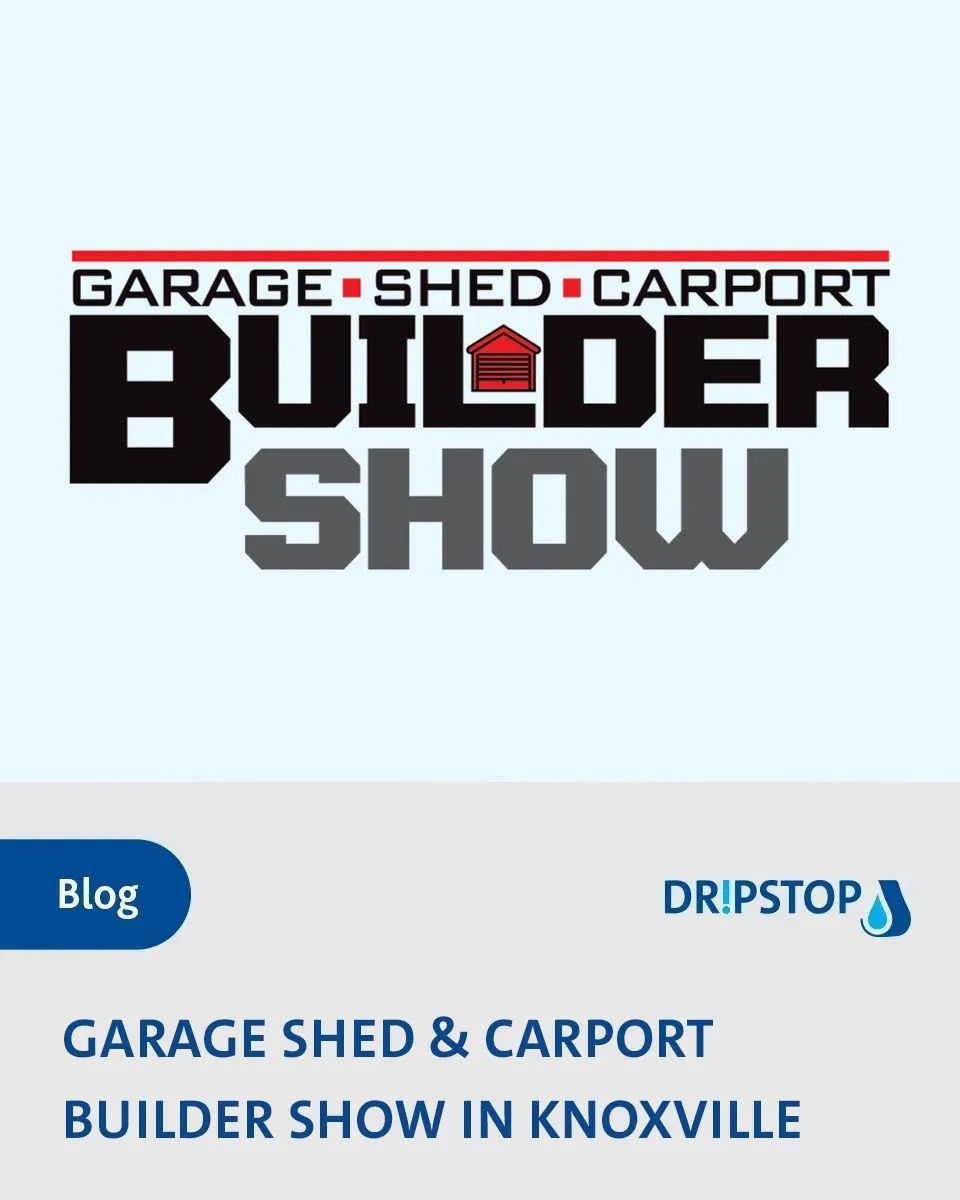A Simple Solution to Metal Panel Condensation in Non-Insulated Buildings Podcast Transcript
Lexi: Hello, and welcome to another episode of Metal Minutes by Cornerstone Building Brands. My name is Lexi, and I will be your host. Today, I have Tyler Roose, Manager of Sales Development at Cornerstone. And Chris Davis is joining us from DripStop, which is a common condensation-control product that we will talk about later in this podcast. How are you two?
Chris: Fine. Thanks for having me.
Tyler: Great, Lexi. Thanks for having us.
Lexi: Awesome. Alright, so today’s topic will be about a solution to metal panel condensation. So we have a good concept of what condensation is. It’s the dew that forms on the grass in the mornings or the beadlets of water that appear on our glass when we’re drinking a cold beverage. How does condensation typically form on metal panels?
Chris: One of the things I always try to do when I describe what’s happening there is I try to draw a mental picture. And there’s two things about condensation that we all need to understand to know how it works. One of them makes sense to me. The other one doesn’t, but if you look it up, you’ll find out it’s true. I think we all know warm air holds more moisture than cold air. We all know it can be more humid on a warm day. But the one that always gets me is, it’s an over-simplification, but wet air is actually lighter than dry air, and intuitively that doesn’t make sense to me. I think like a wet, heavy day.
Chris: But we picture our building, right? For simplicity’s sake, let’s say it’s a pole barn. Nighttime comes. It gets cold outside, right? We’ve got warm, wet air inside. Remember, that’s lighter than the dry air. That rises up until it hits the cold metal roof. Picture like a cloud up between the gables. Remember, the cold air won’t hold as much moisture as the warm air. So water literally falls out of suspension in the air until it goes back below the dew point, as condensation droplets. Once it goes back below that dew point, then it stops dripping.
Chris: The dew point depends on a temperature difference. So it’s cold outside, and it’s warm inside, right? And the humidity level: the higher the humidity level, the lower the temperature difference it can handle before it starts to drip and vice versa. When it’s really cold outside and really warm inside, we need very, very little humidity in there before it starts to rain. So if you kind of picture that as a way of figuring out what’s happening inside your building, it gives us a better chance to understand and try and fight against that happening when we’re putting up our buildings.
Lexi: Okay. That makes sense. Along with the humidity in the air, what other kinds of things can cause condensation in a metal building?
Chris: Well, condensation’s almost always… It’s a combination of a temperature difference and humidity level. So there’s tons of things that can go into it. If there’s people inside the building, if there’s animals like livestock confinement, tons of humidity, right? So it needs very little temperature difference in the air before it starts to rain. Curing concrete. If you’ve poured a concrete form in the bottom of a base, all that lets off moisture. Drying hay, space heaters, the ground itself, moisture coming up through the ground itself, there’s lots of different sources of that.
Chris: And then the other thing is when there’s a huge temperature difference. If we’re trying to heat a building that doesn’t have an insulated roof or insulation in general, you’re basically going to create a bigger temperature difference, so it can handle less humidity. So you’re going to cause more of that in itself. So temperature difference and humidity levels are what cause that condensation.
Lexi: Okay. What kind of effects does this condensation have on the types of panels that we use?
Tyler: The biggest thing that we see and a lot of the feedback that we get from our customers is moisture content and the presence of condensation in a building is more of a nuisance than anything. Think of an auto body shop or an equipment storage for a farmer, things like that. If you have high moisture content and water droplets forming at the base of your roof panel and dripping back down into the building, they’re getting things wet. They’re creating spots of dirt and mud. And it’s really just more of a nuisance than anything.
Tyler: The other effects it can have is, as Chris mentioned, especially around livestock, is there’s a heavy, heavy moisture content in those types of buildings. That can cause corrosion. You can have water setting against the back of your roof panel. That wears out the paint. That attacks the steel, and really affects the quality and the longevity of that panel.
Tyler: Other things such as mold and mildew growth, insects, a variety of things. But what we’ve found and, like I said, the feedback we’ve gotten from our customers is moisture and the condensation that forms on the bottom of the roof panels is more of a nuisance than anything. And DripStop is a very practical way to not eliminate that, but as Chris mentioned, to hold that moisture until it can evaporate back in the air as natural humidity.
Lexi: Okay. So now we know what causes it and what problems it can cause. Now let’s talk about the solutions. So how are we able to control condensation in our metal building?
Chris: Well, traditionally we’ve always tried to insulate to try and keep that temperature difference down so that the building can handle more humidity before it starts to drip. And insulation, you always put a vapor barrier under it, so that basically that water vapor doesn’t go up through the insulation, hit the metal roof, and drip down anyway, which is a… It’s a good way to do it.
Chris: DripStop’s a different way. DripStop actually works kind of like a sponge, a giant sponge. When that warm, wet air rises up and hits that cold metal roof, it actually catches the moisture as it’s falling out of suspension and holds it there until it goes back below the dew point, where then it burns back off into normal humidity. It’s almost like a breathing process, right? So absorbing and releasing. And it’ll hold more than a quart of water per 10 square feet. So there’s a whole lot of moisture that it can hold. Some of the practical advantages of that are that birds aren’t going to get into it. There’s one step less of the construction process. So a lot of people turn to that as a different way for fighting condensation.
Lexi: So we’ve mentioned DripStop a few times now. What is this product made of, and how is it installed on the metal panel?
Chris: Well, DripStop’s basically, it’s a non-woven textile with an adhesive backing that’s applied to the steel panel as it’s formed. So it’s stuck to the bottom of the steel panel as it’s formed. So it’s delivered to the job site already on. And again, it’s about 90% air. It’s easier to call it a water net than a sponge. So it will absorb and hold that moisture and then release it when the time comes, when the sun comes back out. And it’s vented off normally as the building ventilation happens.
Chris: There’s some things that are advantages to this. It’s not for everything, certainly. If you’re heating or cooling your building, for the most part, this isn’t the right product. You need an R-value. There are some exceptions we can talk about, too. But for non-insulated, non-climate-controlled buildings, this is a faster, easier way to do it. It saves time. For the most part, builders say it saves about half the time on the roof, and it saves money because since it’s delivered to the job site already on, there’s no need for you to pay labor to put it up. So time and money are big ones.
Chris: The durability: once it’s on there, it’s on there. It’s almost impossible to get it off. It’s very strong. So people like that fact and the fact birds can’t get into it or peck at it, and there’s no taping the seams. And another factor is safety. Basically, with half the time on the roof, that means less chance of a fall. And also putting down the insulation, a vapor barrier on a windy day with a slap tacker, trying to get that stuff down, if you’re going to fall on a roof, that’s generally one of the top instances where it can happen. So it is a safety factor for crews.
Chris: There’s additional benefits too. Acoustics. It does knock down about 20% of the rain noise or the impact effect and the echo effect inside of a building. It’s a faster, easier way of handling the same problem in a different way.
Tyler: Chris, that’s all great stuff. One thing I wanted to hit on a little bit is some of the benefits that we mentioned earlier in the livestock and the ag buildings. Think confinement, things like that. I know we’ve had a lot of great success stories in the marketplace from customers, and as we’ve discussed, there’s a very high content of moisture in those types of environments. Can you speak a little bit to some of the testing and accelerated testing that you’ve done in the livestock realm and some of the advantages of DripStop there?
Chris: Sure. In livestock confinement, one of the biggest things people… We all think it’s ammonia that’s attacking the steel. It’s not. It’s sulfuric acid from all of the animal waste that’s there in the air. And sulfuric acid… It’s not really rocket science. The first thing they say about dealing with acid is to wear eye protection, and the second thing they always say is wear rubber gloves.
Chris: Well, basically DripStop’s kind of like putting a rubber glove over your whole steel. The adhesive on DripStop is rubber. So you’re rubber coating the entire underside of your steel panel when you put it on. So it creates a barrier that is very tough against that type of corrosion. We’ve done extended testing with this and did testing to the point of all of the wet stack testing, humidity chamber testing, basically the most corrosive tests in steel. And what they found was, with DripStop on, there was significantly less to no corrosion in these accelerated tests. And without DripStop, there was quite a bit.
Chris: And again, it’s a fact that if you can rubber coat your seal, you’re certainly going to help protect it from the corrosive elements in livestock and farming and other things, self storage. There’s a number of different things that are in that realm. So anything that rubber can help protect from, it certainly is a benefit in that respect. Livestock confinement is definitely one of the bigger sections that’s used DripStop to this point, and one of the main reasons and benefits of it is because of this. So does that answer your question?
Tyler: Yeah, that’s perfect. And I think the important thing to point out there is obviously DripStop is not going to eliminate the moisture in that building. It’s not going to change anything about it, right? But the fact is, think about the moisture that’s soaking the trusses, the purlins, and things like that. As Chris mentioned, that rubber backing certainly helps protect your roof steel and protect the assets underneath of it. So thank you for that, Chris.
Chris: Oh, no problem. One other use that we didn’t really mention, it is used, and it seems to be happening more and more now, in some of the buildings that put in like a deck ceiling and then blown-in insulation on top. Then you have a single-skin roof above. So I said in only non-climate-controlled buildings, but we see more and more of these places where they’re putting a single-skin roof with a steel roof deck down below and then blown-in insulation. I mean, that’s the perfect scenario as well, because there’s almost nothing that’s zero permeability to water vapor. And water vapor in your building below is going to leach up into that attic space, because remember it’s lighter than the dry air, and eventually going to hit that metal roof and drip back down. So I’d say that’s one area that we hadn’t really talked about, but seems to be on the growth right now.
Lexi: Okay. That was actually going to be one of my next questions. We’ve talked a lot about using DripStop in the agricultural applications. What other applications do you recommend for use of the DripStop solution?
Chris: One of the easiest places to use it is actually the self-storage. And there, one of the biggest advantages is the durability. Once it’s on, it’s really on. If you’ve ever gone into a self-storage facility that’s a little bit older and has insulation, a vapor barrier, people will shove everything and the kitchen sink up to and through any vapor barrier that’s there. And you go in, and it looks like duct-tape modern art after a while. But DripStop is extremely strong. You’re not going to have that issue with people tearing it or causing issues.
Chris: Other places, open-walled structures: carports, truck ports, RV storage, garden centers. In the last few years, we’ve seen a lot more of we call them the hobby-type buildings, the small buildings where people aren’t really heating or cooling them, but they’ve got a shop or something inside, a suburban market. So anywhere you don’t want it to rain on the inside, basically, and you’re not planning on heating or cooling it, or you’re not going to have a drop ceiling.
Tyler: Yeah. To your point, really anywhere, right? So if there’s not a heating and cooling system, if ventilation lacks, I mean, it’s an ideal scenario, so yep.
Chris: Aircraft hangars, boat storage, all types of cold storage applications as well.
Lexi: Okay. Tyler, can you speak a little bit about how DripStop is applied or manufactured to our panels?
Tyler: The product is manufactured really basically at the front end of the panel manufacturing process at all of our facilities. We have what’s called a pre-cut line. The DripStop is actually applied from a coil, just like the panel coil is. It comes off the de-coiler. It’s married up with the edge of the steel coil. It gets cut to length, and then the DripStop actually gets roll formed with the steel itself and packaged into the bundles. Like Chris mentioned earlier, it’s not only for the installer. It’s a non-labor-intensive process to install it, but it’s a relatively easy process from a manufacturing standpoint as well.
Lexi: Okay. Well, this has been some great information. Is there anything else that you want our listeners to know about the DripStop product or the issues it can solve with condensation in metal buildings?
Tyler: One thing we should add, Lexi, we utilize the DripStop on three of our products, the Imperial Rib®, which is obviously one of the more common light-gauge, three-foot-coverage metal panels in the marketplace. Also, the PBR panel, which you see a lot in the self-storage industry. It’s a very common roof panel in the metal building world. And also, one of our retrofit panels, the Retro-R®, which is an overlay panel that goes over the top of an existing PBR roof as well.
Tyler: So those are the three panel products that we offer it on as an add-on feature and really offer it across the country. You don’t see near as much of it in the hot, dry, arid climates of the west part of the country. But certainly, as we’ve discussed, anywhere where moisture may be an issue inside of a building, it’s very relevant.
Chris: I guess one thing I’d mention as well is when we’re talking about either method for controlling condensation, both options, whether it’s insulation or DripStop, you need adequate ventilation to reset the system, so to speak. So if you have insulation, basically, if you have more and more moisture entering the environment, remember that that insulation is there to try and keep that temperature difference down, so it can handle the humidity. But at a certain extent, it’s going to get over-taxed, and it’s going to start to drip, right?
Chris: DripStop is the same way. DripStop holds a quarter of water per 10 square feet. A huge amount of moisture inside of a building, but it doesn’t hold a quart and a half, right? So our ventilation is our way of, let’s say, wringing out the sponge, so to speak, or resetting the system. What we’re looking for there is enough air flow in at the eave, out at the ridge to wash that wet air up and out of the facility so that you can start over again, whether it be for insulation or for DripStop.
Chris: This isn’t a new product. We’ve been doing it since 1995. It’s been tried and tested on every continent, every climate condition in the world, except Antarctica. I’ve got to say that. But it’s not for everything. But for what it is, it’s generally faster, cheaper, and more durable than the other options that are available to us.
Tyler: Yeah. That’s great, Chris. Thanks for joining us today. Certainly, customers, builders, end users out there, if you need more information about DripStop, technical details, reach out to your local sales representative. We’d be happy to answer any additional questions.
Lexi: Sure thing. Again, thank you so much for joining us today, Tyler and Chris.
Chris: Thank you for having me.
Tyler: Thanks, Lexi.
Metal Minutes podcast shares insights from metal construction subject matter experts deep dive into trending industry topics. Learn from industry leaders with knowledge relevant to many different project types. This podcast episode was created by Cornerstone Building Brands, ABC’s parent company.
Thanks for listening to our episode! For more information visit our blog or visit our podcast page for similar topics.
Want to become a Metal Insider? Subscribe to our newsletter for exclusive industry news and updates.
Article was published on website American Building Components.








